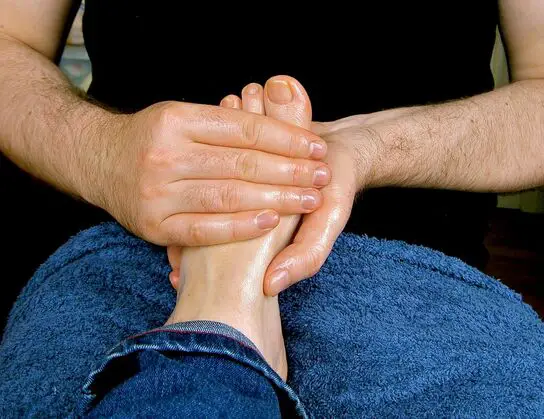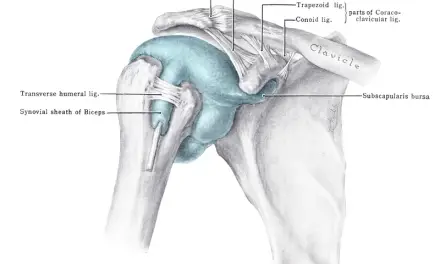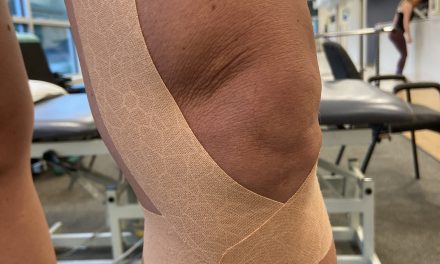Could a simple foot massage make your brain produce its own supply of oxytocin to help reduce the symptoms of autism spectrum disorder (ASD)? Some researchers think so.
A recent study from The Clinical Hospital of Chengdu Brain Science Institute in Chengu, China, explored non-invasive and non-pharmacological ways to increase a person’s endogenous production of oxytocin, a hormone that is known for building trust and bond between one or more individuals. What better way to do so than “old-fashioned,” affective touch. (1)
Lead researchers Dr. Keith Kendrick and Dr. Weihua recruited 40 healthy, heterosexual male university students in their early twenties, who had at least two experiences with Chinese style foot massage (pressure only, no strokes). Previous research on massage and oxytocin concentration in the bloodstream or saliva among children, the researchers reviewed, did not explore its effects on autistic children or adults.
They hypothesized that a foot massage by a human would be more effective at releasing oxytocin than a machine massage, and massage itself increases the response in brain regions that process cognitive and reward effects of social touch of the bilateral orbitofrontal cortex (OFC) and superior temporal sulcus (STS) of the brain, but not in the somatosensory cortex (S1), which responds to to physical touch and its intensity.
They also hypothesized that “basal and/or evoked [oxytocin] release and neural responses to hand massage would be positively associated with pleasure/reward ratings and negatively associated with autistic traits and dislike of social touch but not with other personality traits.”
Before the experiment, the subjects filled out several questionnaires that asked about their personality, traits, touch sensitivity, and reward behavior in Chinese. Afterwards, they were asked to wash their feet and recline on a chair with their feet propped. It seemed like a set up for for a pedicure experience, except the subjects had a nurse insert a blood catheter in an arm vein and researchers used functional near-infrared spectroscopy (fNIRS) to record brain activity.
All were blindfolded while one male massage therapist performed the foot massage, which consists of 20 seconds of sustained compression with a 10-second period of rest before the compression was repeated 20 times for total of 10 minutes. This was repeated with a machine that mimicked the compression as close as possible in terms of pressure. The paper did not mention exactly where the therapist compressed.
The time transitioned between the therapist and the machine was 15 minutes. After each session, the subjects filled out another questionnaire that asked:
- How much did the massage make you feel pleasure?
- How much did the massage arouse you?
- How strong was the massage? (i.e. how intense).
- How much would you be willing to pay for the massage (1-100 RMB).
- Is the massage therapist male or female?
Immediately after a massage (therapist or machine), a blood sample was drawn, collected, and analyzed within a six-month period of oxytocin levels.
Not only did hand-administered massage elicited a much higher oxytocin concentration in the bloodstream (51.8%) from baseline than machine massage (18.2%), various parts of the brain responded to hand massage and machine massage differently. In the hand massage session, there was an increase of activity in the mediolateral orbitalfrontal cortex (mlOFC) and posterior STS—parts that process rewards and decision-making—that made the subjects want to pay more for the massage, but this was lacking in the machine massage session. There was almost no different in activity in the somatosensory cortex between groups.
There was also an inverse relationship between high oxytocin concentration and lower scores in the Autism Spectrum Questionnaire after the hand massage, but not so much after the machine massage. Seventeen subjects thought the massage therapist was a man while 23 thought a woman massaged them. There was no difference in brain activity between the gender-identification groups.
Overall, the subjects reported that hand massage felt better than machine massage, and they can tell the difference even though they were blindfolded, but there were some issues with the study.
Even though this seems like a great way to advertise and market foot massage as a way to increase oxytocin in your body, there are some caveats to consider. First, this is the first study that attempted to see if an increase of oxytocin concentration from touch have any effect on autistic behavior, but this was done with young healthy men in Chengdu, China. This may not extrapolate well among women, children, and teens.
Kendrick et al. mentioned that blood oxytocin was measured, and the concentration could be different in the cerebralspinal fluid in the brain. There is also a matter of culture where the gender of the therapist does not affect gender preference among subjects. Thus, it is possible that if this experiment were to be replicated in the U.S., Germany, or Iran, there might be a difference in brain activity and oxytocin concentration among male subjects.
Affective touch is essential for development of better social bonds, friendships, and romantic relationships. As humans, we need it everyday, perhaps as much as food and shelter for some of us. It is a cue to safety and a foundation to establish trust. This is study is a stepping stone to unravel what goes on in the brain and our physiology, which may also help alleviate symptoms of ASD.
An email was sent to both researchers to inquire more about their work, yet they have not responded.
A native of San Diego for nearly 40 years, Nick Ng is an editor of Massage & Fitness Magazine, an online publication for manual therapists and the public who want to explore the science behind touch, pain, and exercise, and how to apply that in their hands-on practice or daily lives.
An alumni from San Diego State University with a B.A. in Graphic Communications, Nick also completed his massage therapy training at International Professional School of Bodywork in San Diego in 2014.
When he is not writing or reading, you would likely find him weightlifting at the gym, salsa dancing, or exploring new areas to walk and eat around Southern California.






